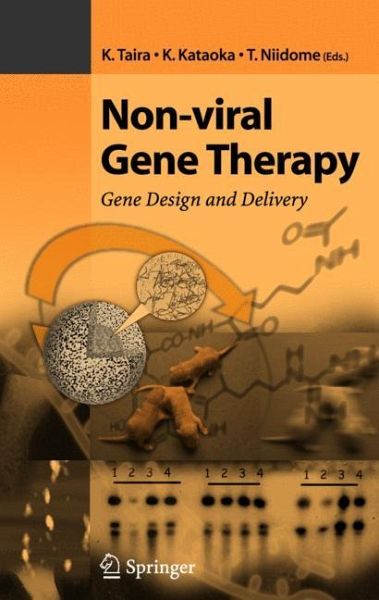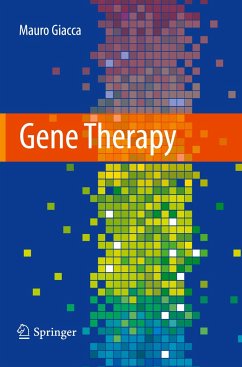
Non-viral Gene Therapy
Gene Design and Delivery
Herausgegeben: Taira, Kazunari; Kataoka, Kazunori; Niidome, Takuro
Versandkostenfrei!
Versandfertig in 1-2 Wochen
115,99 €
inkl. MwSt.

PAYBACK Punkte
58 °P sammeln!
The development of gene medicine based on the concept of molecular therapy has opened new medical horizons. Among the many techniques in gene medicine, gene design and delivery are especially significant in clinical applications. This book presents state-of-the-art information on non-viral gene-delivery techniques, covering a broad spectrum of disciplines that include chemistry, molecular biology, cell biology, and pharmacokinetics. Major sections introduce molecules for gene delivery and their properties; technologies of controlled gene delivery in vitro and in vivo; therapeutic genes and the status of clinical applications; and the design of genes based on current RNA technology, with revolutionary developments in the world of RNAi shown to be key factors in gene medicine. This groundbreaking work is an invaluable resource for researchers and engineers in genetic engineering, molecular medicine, biochemical engineering, and biotechnology.
Several years ago, when the discovery of catalytic RNA was recognized in a public manner,many people asked if new ?elds of therapy would soon be available. Although some tentative positive answers were given,nobody would say with certainty that RNA of various kinds was a truly promising means of altering gene expression. In fact,over the past decade,both our knowledge of RNAs with different functions and the utility of RNA in the inhibition or enhancement of gene expression have occurred with great drama. We proceeded in terms of possible therapeutic tools from RNase P and group I introns through hammerhead RNA enzymes, antisense technology, and more recently, to RNAi and its derivatives. A useful practical method of RNA delivery in animals will complete the picture. The diversity of RNA and the varied role of it inside cells and in therapy should be a tremendous challenge for young molecular biologists. This volume will make their task easier. Sidney Altman Sterling Professor ofMolecular,Cellular & Devel- mental Biology,Nobel Laureate Department of Molecular,Cellular and Developm- tal Biology Yale University V NGTPR 4/23/05 1:00 PM Page VI VI Foreword Delivery of nucleic acids to cells in an animal remains a challenging problem. It is the major obstacle to success of therapeutic approaches using genes and oli- nucleotides,including siRNAs. Solutions found so far by chemists are satisfactory only for transfection of cells in culture.














